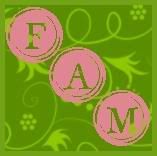With digital cameras and photoshop, just about every artist is starting to photograph more and more of their own work. There are many ways to do this well, many requiring a certain amount of special equiptment. The most important things to remember, whether taking pictures for ebay or a website, is to have good lighting and crisp, in focus photos. You can take all your pictures outside, and alot of people do, but you are at the mercy of the elements. Instead, why not set up a small photo studio inside with just a few things, and get consistent pictures everytime.
To build a mini studio, you will need:
3 lights
3 pieces of cardboard or particle board of some kind, at least 16x20, all the same size
white paint
1 or 2 tripods
I used the backing from 3 old frames, a desk light (garage sale find $2), a pendant light (IKEA $10), a shop light ($10 including bulb), tripod for shop light (free from friend-too broken for a camera, fine to hold a light), 3 daylight spectrum 100-watt bulbs, and a tripod for my camera (Best Buy $15). The idea is to use what you have, and buy as little as possible.
After you gather your materials, paint one side of the pieces of wood bright white. Paint several layers so none of the material shows through.
Next, fasten the sheets together as shown below. My wood had holes in the sides so I just tied it together with string at the corners/ edges.
Position your lights so one is above, and two are directly in front to the sides. You will have to experiment to figure out where to have the lights without blocking your camera.
Set up your camera on the tripod, turn off the flash, and go to town!
When you are done, your setup should look something like this:

 This works for paintings or 3D objects. Just put something white or neutral on the table under your 3D piece so there is no distracting background. Good Luck and have fun! xoxo
This works for paintings or 3D objects. Just put something white or neutral on the table under your 3D piece so there is no distracting background. Good Luck and have fun! xoxo





No comments:
Post a Comment